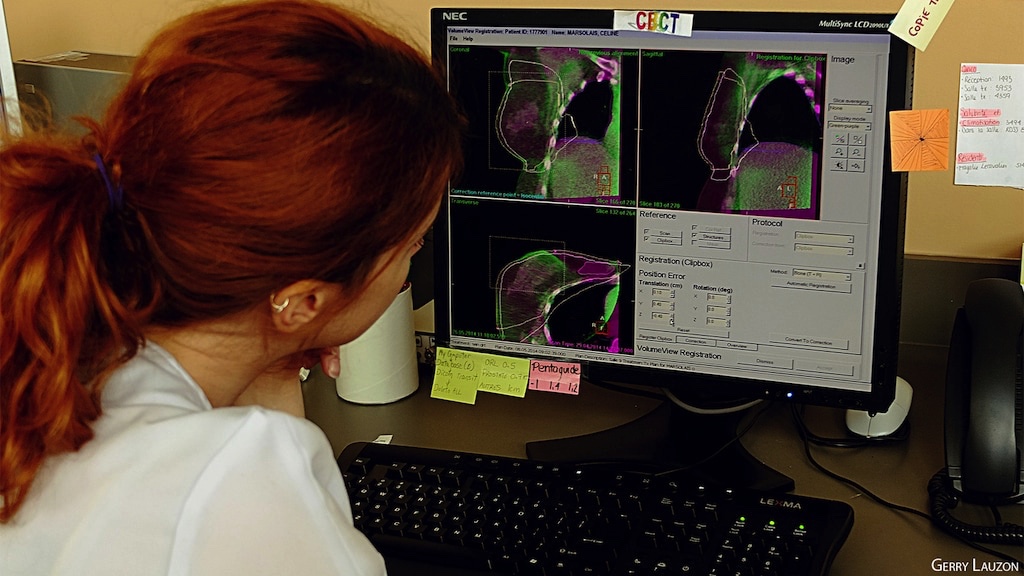Breast-conserving surgery accompanied by radiotherapy (RT) gave women better survival odds than mastectomy with or without RT, according to Swedish researchers.
Among nearly 50,000 women treated for T1 to T2 breast cancer, those who underwent breast-conserving surgery followed by RT achieved 5-year overall survival (OS) and breast cancer-specific survival (BCSS) rates of 95.1% and 98.2% compared with 86.0% and 90.5%, respectively, for those who underwent mastectomy with RT, and 84.5% and 95.0%, respectively, for those who underwent mastectomy only, reported Jana de Boniface, PhD, of Karolinska Institutet in Stockholm, and colleagues.
Even after adjusting for previously unmeasured confounders, breast-conserving surgery plus RT yielded better survival than mastectomy, regardless of whether it was accompanied by RT, they noted in JAMA Surgery.
These findings suggest that if both of these “interventions are valid options, mastectomy should not be regarded as equal to breast conservation,” they concluded.
De Boniface’s group pointed out that previous cohort studies have demonstrated better survival after breast-conserving surgery with RT than after mastectomy without RT. “Mastectomy has subsequently been questioned as an equally valid surgical alternative,” they wrote. “However, there are important confounders that may have biased these results.”
The authors prospectively collected data from the Swedish National Breast Cancer Register, as well as comorbidity and socioeconomic data from other national registries. The study cohort included 48,986 women diagnosed with primary invasive breast cancer from January 1, 2008 to December 31, 2017. All patients underwent breast surgery, had tumor stages of T1 or T2, and had no more than 10 positive lymph nodes.
Of the women in the study, 59.9% had breast-conserving surgery plus RT, 25.3% had mastectomy without RT, and 14.7% had mastectomy plus RT. During a median follow-up of 6.28 years, a total of 6,573 deaths occurred, of which 35.2% were related to breast cancer. The 5-year OS rate for the entire cohort was 91.1%, while the BCSS rate was 96.3%.
De Boniface and colleagues found that women who underwent mastectomy without RT were older, with lower levels of education and income. In addition, patients who underwent mastectomy had higher comorbidity burdens, regardless of RT.
After adjusting for tumor characteristics, treatment, demographics, comorbidities, and socioeconomic background, the authors found that patients who underwent mastectomy without RT had significantly worse OS (HR 1.79, 95% CI 1.66-1.92) and BCSS (HR 1.66, 95% CI 1.45-1.90) compared with those who had breast-conserving surgery with RT. Those who underwent mastectomy with RT also had worse survival (OS: HR 1.24, 95% CI 1.13-1.37, and BCSS: HR 1.26, 95% CI 1.08-1.46) versus the breast-conserving surgery group.
This study “adds evidence to support the recommended use of breast-conserving surgery with RT in both node-negative and node-positive breast cancer,” de Boniface and team wrote, adding that neither socioeconomic background, comorbidities, nor the addition of postoperative RT after mastectomy diminished survival differences.
They suggested that when it comes to deciding between breast-conserving surgery and mastectomy, a collaborative weighing of the pros and cons is needed by both clinician and patient. “It is striking that extensive breast surgery is more prevalent in node-positive disease despite suitability for breast conservation, indicating a misconception of safety, probably both from a patient and a physician perspective,” they added. “In short, more extensive breast surgery does not appear to save any lives.”
While there have been efforts in recent years to de-escalate radiation therapy, the results of this study “challenge the wisdom of prematurely abandoning radiation after breast-conserving surgery for clinically early-stage disease,” wrote Lisa Newman, MD, MPH, of Weill Cornell Medicine in New York City, in an accompanying commentary.
The study’s findings could represent two perspectives — the possibility that radiation induces secondary abscopal antitumor effects, or that some breast cancers are so biologically indolent they don’t require locoregional intervention, she noted.
“Regardless of the interpretation chosen for the outcome patterns observed in this study, one fact cannot be disputed: [breast-conserving surgery] is safe and effective management in early-stage breast cancer,” Newman concluded.
Bottomline: Often less is more when it comes to treating breast cancer and that especially holds true with CyberKnife radiation therapy. At CyberKnife Miami we can treat breast cancer with 1-to-5 Radiation sessions compared to 35 with other types of radiation. Call our breast cancer experts at CyberKnife Miami to see if we can help you get cancer behind you in the safest, easiest, quickest way possible so you can get on with living life. 305-279-2900 and click here to go to our breast cancer treatment page on our website.
Disclosures: The study was funded by the Swedish Breast Cancer Association. de Boniface is supported by a Junior Clinical Investigator Award from the Swedish Cancer Society and a co-author is supported by a Research Environment Grant from the Swedish Research Council.
Primary Source: JAMA Surgery – Source Reference: de Boniface J, et al “Survival after breast conservation vs mastectomy adjusted for comorbidity and socioeconomic status: a Swedish national 6-year follow-up of 48,986 women” JAMA Surg 2021; DOI: 10.1001/jamasurg.2021.1438.
Secondary Source: JAMA Surgery: Source Reference: Newman LA “Safety of breast-conserving surgery in breast cancer and risk of overtreatment vs undertreatment” JAMA Surg 2021; DOI: 10.1001/jamasurg.2021.1450.

